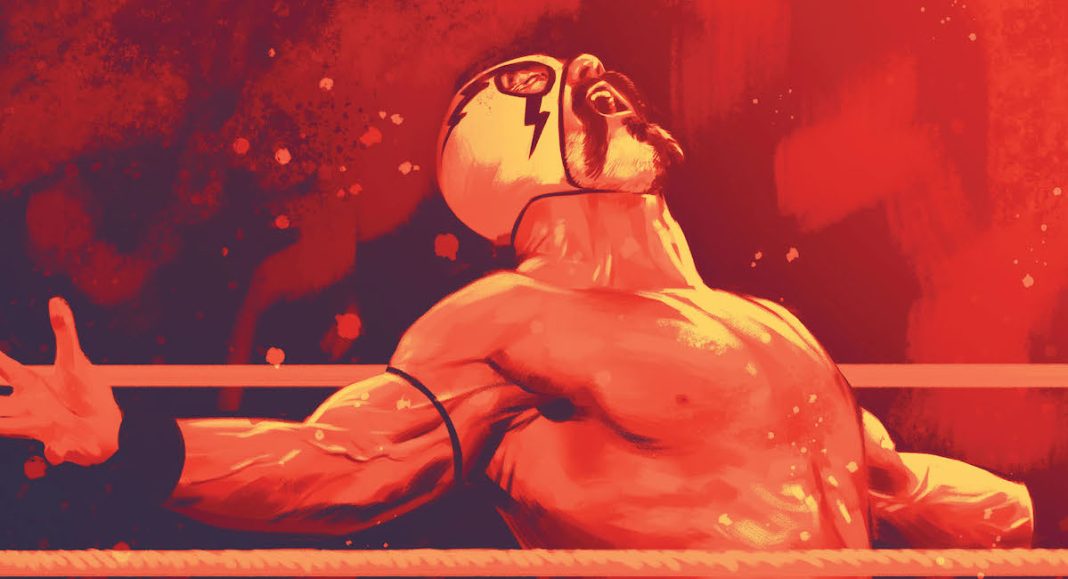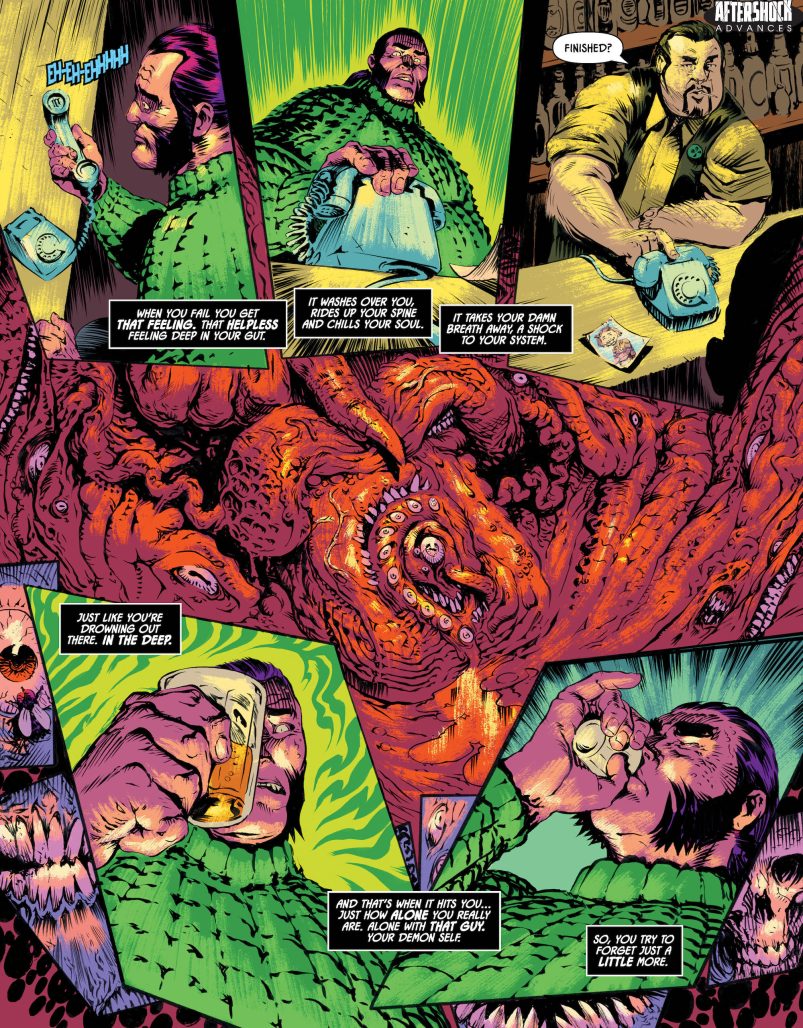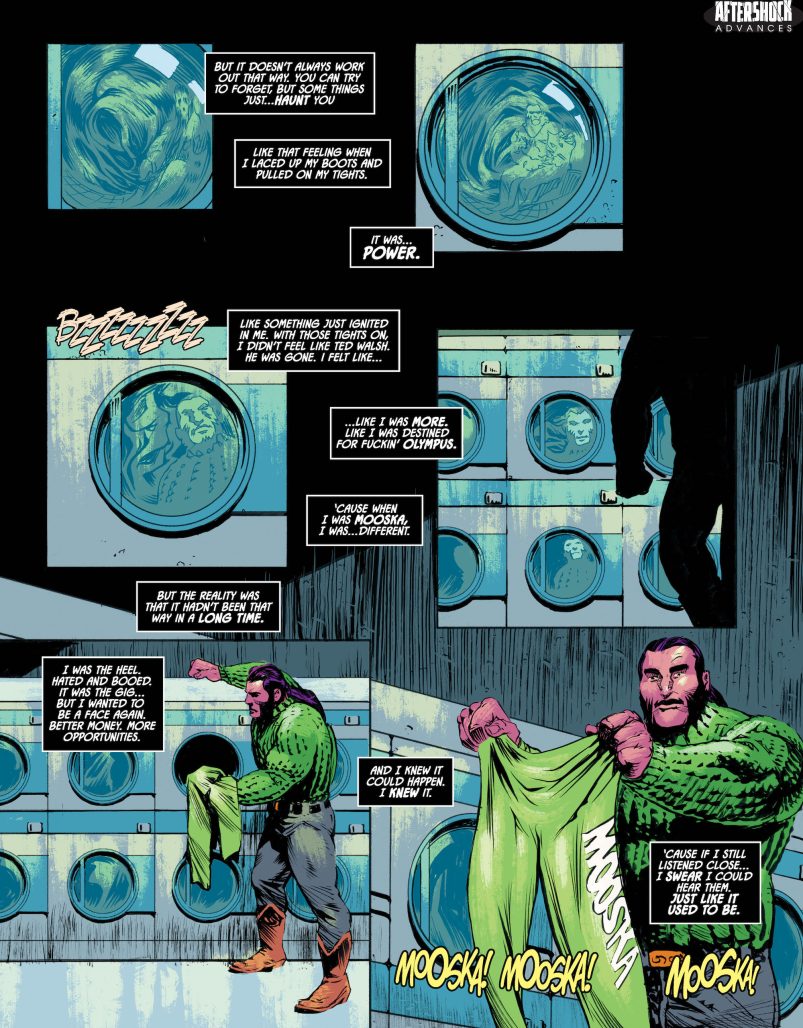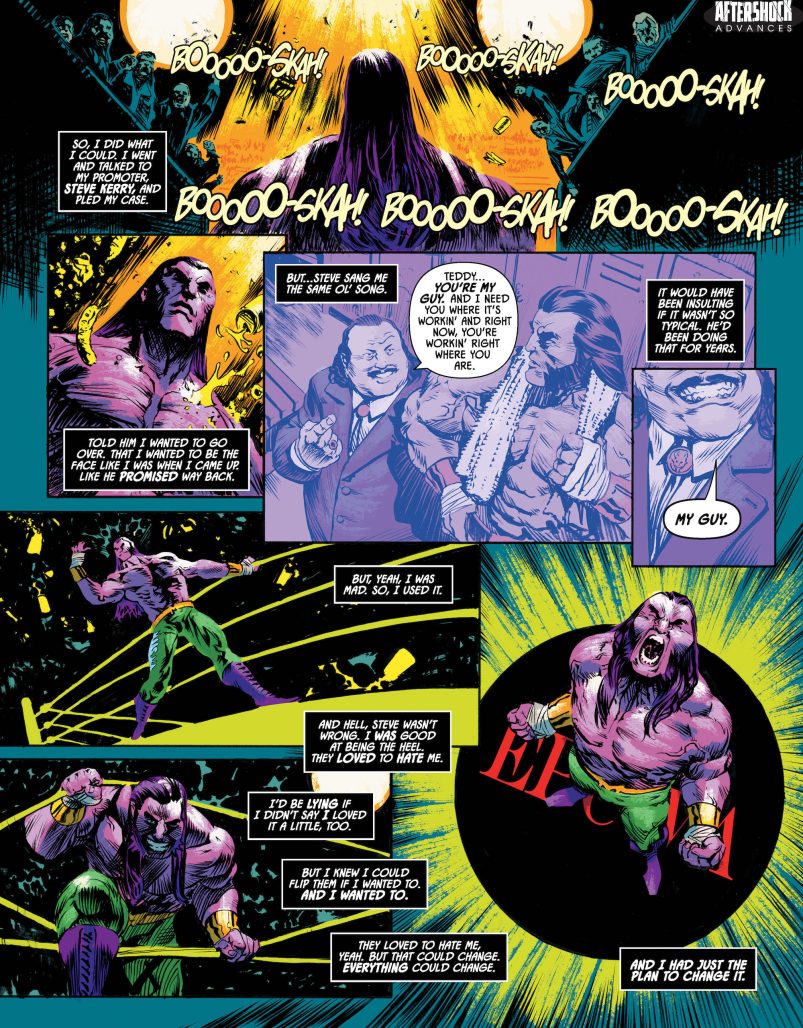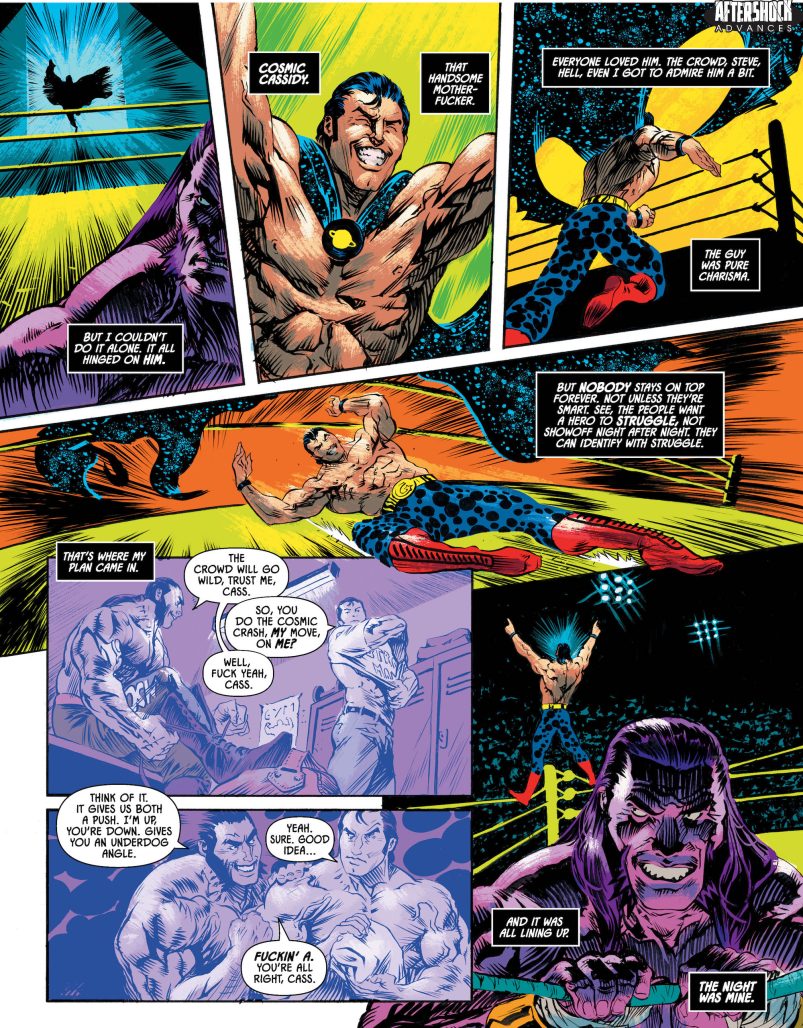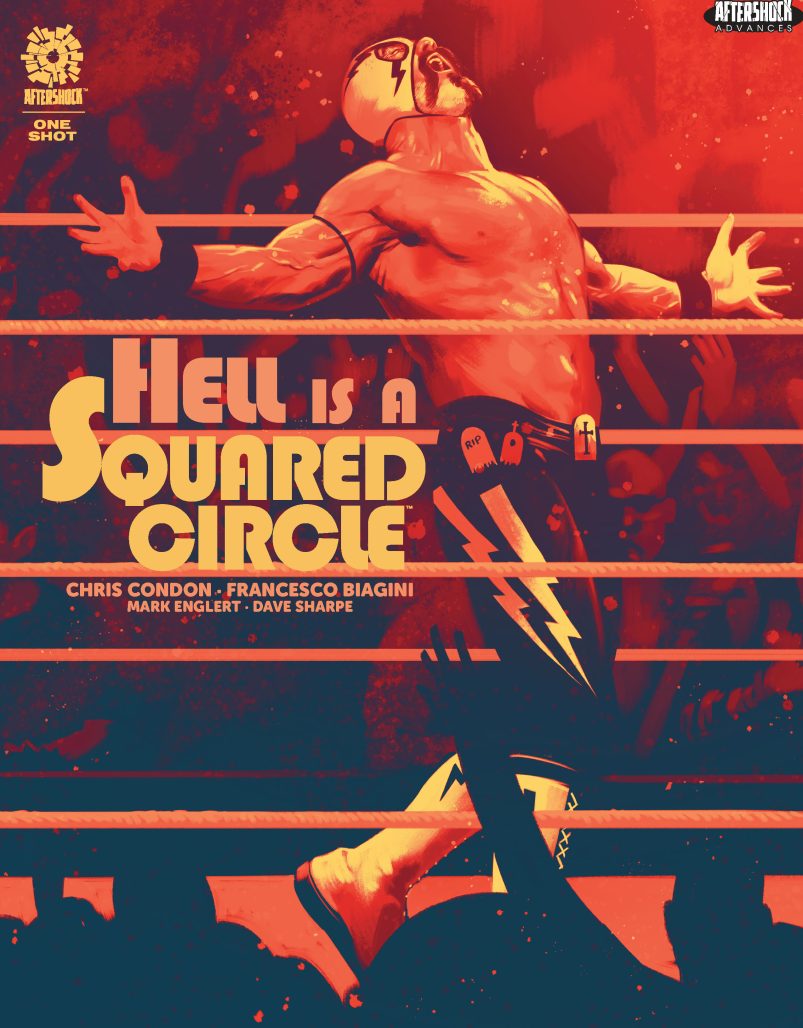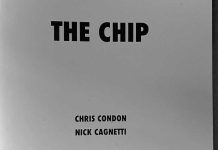Fatally flawed characters, most especially the protagonist. Check. Dirty deeds acted out covertly and compelled by the darkest human emotions. Check. Plenty of violence, including an industry based on choreographed gladiatorial events. Check. An ending with nothing gained after much ventured, and a grappler sprawled on a canvas apron littered with broken dreams. Check. The wrestler as a soul damned by his own anger issues, his own ego, and navigating his own downward spiral of vicious cycles. Check. The solicits asked if Wrestling Noir was a real genre, and after reading AfterShock’s Hell Is a Squared Circle, you’ll be convinced that, if it’s not, it isn’t for this creative team’s lack of trying.
The first of those vicious cycles hits in 1979 when regional circuit pro wrestler Ted Walsh has been in the grapple game long enough to become an established heel. Which frustrates him no end, after spending a brief period early on as a face and looking on that ring role as his true calling. But promoter Steve Kerry disagrees because Walsh as The Irish Mooska (Or ‘Booooska’ as audiences chant at him) is a perfect villainous foil for the more handsome and ‘clean’ fighters of his stable. Ted’s frustrations may even be powering his ring presence and making him such a good bad guy. It feeds on itself and all appeals he makes to flip the script and turn face fall on showbiz savvy, unresponsive ears. Which stokes his vexation even more. To Kerry, letting Ted become a face would simply be bad use of materials.
After a bait-and-switch maneuver by Kerry and his primary face talent, Cosmic Cassidy, Walsh decides to break the concentric circles of self-destructive habits fueled by growing discontent. But he goes too far and ends up alienating himself further from his estranged daughter, becoming a fugitive, and establishing a new identity for himself. A decade and change later, Walsh as Jack Damon, ring name Tombstone, has gone clean and sober, learned greater self-control, and has even reestablished contact with his grown daughter. When the ghosts of his Walsh years edge closer, a new and unconventional challenger rises. In the end, which half of Ted’s tortured soul will hold sway, and which side of his psyche will have its way…hero or heel?
Chris Condon’s script carries a narrative kinship with the 2008 film The Wrestler, as well as a few in common story devices. And Condon could not have aimed more true regarding Wrestling Noir aspirations than this movie. He establishes for the reader an arm’s length empathy for Ted, the extended wish that things could turn out differently than his situation and his solutions dictate. While the story evolves in expected ways, that doesn’t diminish its satisfyingly karmic conclusion.
Francesco Biagini’s art fits not only the tone of the tale but carries the perfect bombastic elements of ringside excitement. For wrestling match panels, that’s expected. But Bagini’s technique transcends grappler scenes alone, infusing the entire narrative with a broad-shouldered, energy-crackling style. His volatile change in facial expression and sudden outbursts of violence not only function well for the kind of story being told, but they also echo comic book art styles of the story’s 1970s through 1990s timespan. As a reader familiar with other boxing and wrestling-based comics characters, I was reminded of similarly excellent aesthetics from the work of Sergio Cariello.
And if Biagini brings the right look to this prestige book, colorist Mark Englert detonates his beautifully explosive renders. Shadow-steeped back alleys and dive bars, the dark arteries of noir fiction, are edged with deepest dye pitch. But Englert also provides brighter, equally edgy coloration to broad daylight and main event spotlights. His work gives the setting a final touch of worn down, soul-numbing miasma whether its mired in tar pit darkness or fully exposed under glare of noonday.
Consummate letterer Dave Sharpe recognizes the opportunity for creative font expression which comes from a sports entertainment tale such as this one and he capitalizes on it as only a select few could. Bells sounding the rounds, chants of the crowd, screams of frustrated ambition and panic all pop from the page. More, they even convey overextended, roaring desperation all their own, and in just the right moments.
Noirs sometimes come with shocks and surprises, true to the standard formulas but transcending them. Others deliver the goods of tragedy and human failings that settle into our bones from the first page, the first frame. Hell Is a Squared Circle is more the latter, but just like a WrestleManiacal event where we pay at the gate and get exactly the entertainment we expect for our bucks, that’s not a bad thing. And this creative tag team delivers a title-belt hoisting performance.
Verdict: BUY
REVIEW: Hell is a Squared Circle
Hell Is a Squared Circle One-Shot
Writer: Chris Condon
Artist: Francesco Biagini
Colorist: Mark Englert
Letterer: Dave Sharpe
Publisher: AfterShock Comics
“Is Wrestling Noir a genre? It is now!
Ted “The Irish Mooska” Walsh is a third-tier wrestling heel with a problem — himself. He’s behind on rent, child support and his career, but he thinks he can change things. As he attempts to take control of his life, his actions leave him with blood on his hands. Ted finds himself on the run from the authorities and the darkness of his past. As Ted tries to escape his former self and build a new, better future, his mistakes come back to haunt him — in the ring and out of it.!”
Price: $7.99
Read more great reviews from The Beat!


